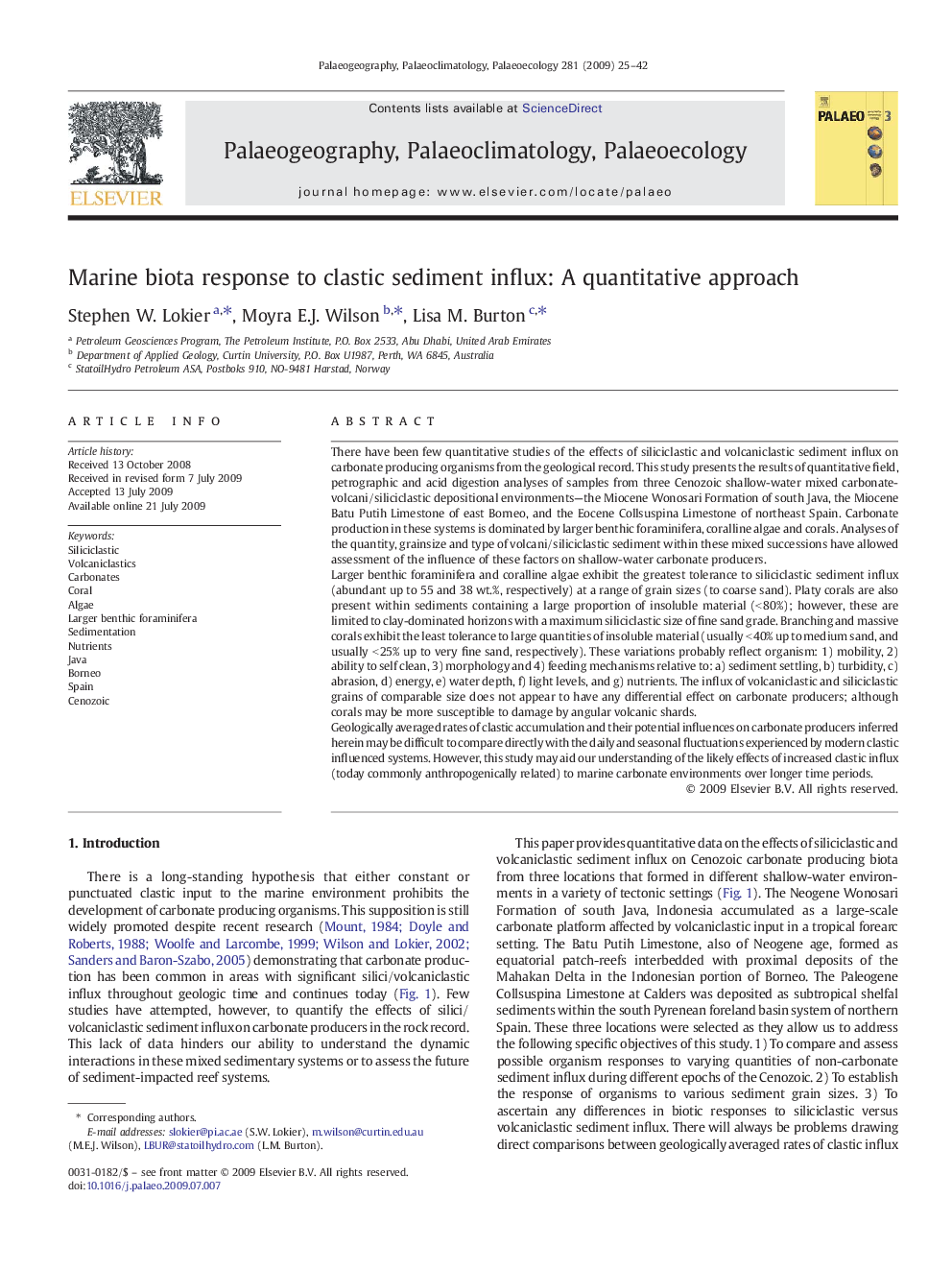| کد مقاله | کد نشریه | سال انتشار | مقاله انگلیسی | نسخه تمام متن |
|---|---|---|---|---|
| 4468016 | 1622295 | 2009 | 18 صفحه PDF | دانلود رایگان |

There have been few quantitative studies of the effects of siliciclastic and volcaniclastic sediment influx on carbonate producing organisms from the geological record. This study presents the results of quantitative field, petrographic and acid digestion analyses of samples from three Cenozoic shallow-water mixed carbonate-volcani/siliciclastic depositional environments—the Miocene Wonosari Formation of south Java, the Miocene Batu Putih Limestone of east Borneo, and the Eocene Collsuspina Limestone of northeast Spain. Carbonate production in these systems is dominated by larger benthic foraminifera, coralline algae and corals. Analyses of the quantity, grainsize and type of volcani/siliciclastic sediment within these mixed successions have allowed assessment of the influence of these factors on shallow-water carbonate producers.Larger benthic foraminifera and coralline algae exhibit the greatest tolerance to siliciclastic sediment influx (abundant up to 55 and 38 wt.%, respectively) at a range of grain sizes (to coarse sand). Platy corals are also present within sediments containing a large proportion of insoluble material (< 80%); however, these are limited to clay-dominated horizons with a maximum siliciclastic size of fine sand grade. Branching and massive corals exhibit the least tolerance to large quantities of insoluble material (usually < 40% up to medium sand, and usually < 25% up to very fine sand, respectively). These variations probably reflect organism: 1) mobility, 2) ability to self clean, 3) morphology and 4) feeding mechanisms relative to: a) sediment settling, b) turbidity, c) abrasion, d) energy, e) water depth, f) light levels, and g) nutrients. The influx of volcaniclastic and siliciclastic grains of comparable size does not appear to have any differential effect on carbonate producers; although corals may be more susceptible to damage by angular volcanic shards.Geologically averaged rates of clastic accumulation and their potential influences on carbonate producers inferred herein may be difficult to compare directly with the daily and seasonal fluctuations experienced by modern clastic influenced systems. However, this study may aid our understanding of the likely effects of increased clastic influx (today commonly anthropogenically related) to marine carbonate environments over longer time periods.
Journal: Palaeogeography, Palaeoclimatology, Palaeoecology - Volume 281, Issues 1–2, 1 October 2009, Pages 25–42